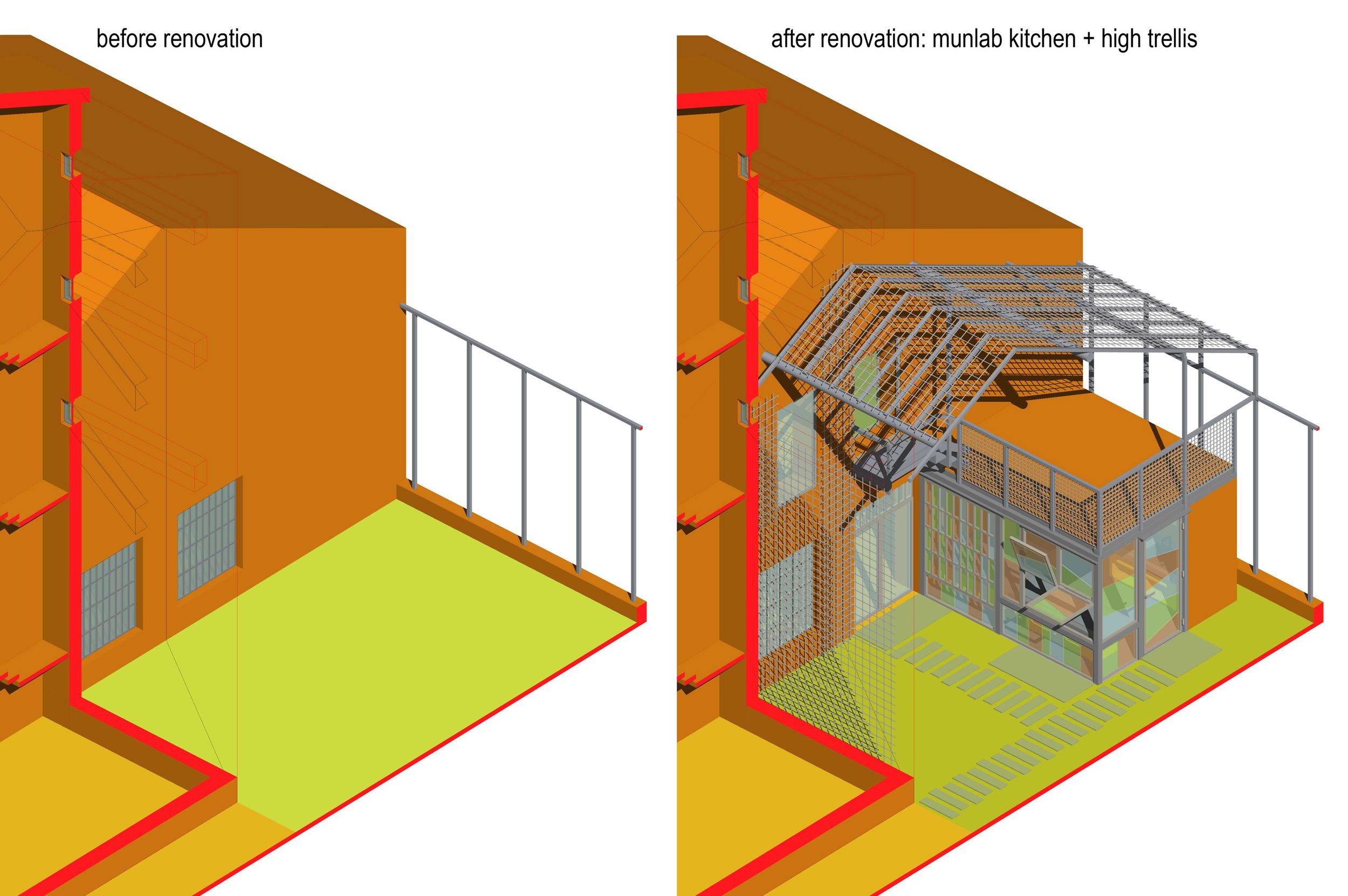























MUNLAB
CLAY ECOMUSEUM
The MUNLAB is an Ecomuseum of Clay instituted by the Piemonte Region in 2007. Its name is the combination of two words: MUN, which in Piemonte dialect means “brick” and LAB that stands for laboratory. It is located in the oldest, and long time dismissed, facilities of the Fornace Carena and is the result of 20 years of research over past, present and future of clay production in Cambiano. Its aim is to preserve the culture of clay starting from the old buildings and the current community: but also to forecast its new and sustainable applications.
The renovation process started at the end of the 80’s with the transformation of the old Hoffmann kiln into an exhibition gallery by Cesario Carena. It continued steadily for several years and now, with the official accreditation of the Ecomuseum, it proceeds much faster: new functions are now reinvigorating the ancient constructions. The renovation strategy can be divided into three main elements. 1) The renovation of the old structures, removing all the unnecessary additions and restoring the damaged walls’ portions. 2) The insertion of new volumes hosting new functions. These new contemporary containers are visibly separated from the original structure; they use low impact current production materials [such as the Fornace blocks] and, when possible, recycled materials coming from local demolitions such as steel beams, window frames and glasses. 3) New interiors, often built using rough construction materials to create an interesting contrast with the massive original structures.
The transformation project is currently ongoing: it is an open process continuously adapting to the new and stimulating requirements of the MUNLAB community.
The renovation process started at the end of the 80’s with the transformation of the old Hoffmann kiln into an exhibition gallery by Cesario Carena. It continued steadily for several years and now, with the official accreditation of the Ecomuseum, it proceeds much faster: new functions are now reinvigorating the ancient constructions. The renovation strategy can be divided into three main elements. 1) The renovation of the old structures, removing all the unnecessary additions and restoring the damaged walls’ portions. 2) The insertion of new volumes hosting new functions. These new contemporary containers are visibly separated from the original structure; they use low impact current production materials [such as the Fornace blocks] and, when possible, recycled materials coming from local demolitions such as steel beams, window frames and glasses. 3) New interiors, often built using rough construction materials to create an interesting contrast with the massive original structures.
The transformation project is currently ongoing: it is an open process continuously adapting to the new and stimulating requirements of the MUNLAB community.
MUNLAB(문랩)은 피에몬테 지역에 2007년도에 설립한 클레이 생태박물관이다. 이름은 벽돌을 의미하는 피에몬테 방언인 MUN(문)과 실험실을 의미하는 LAB(랩), 이 두 단어를 조합하여 만든 것이다. 문랩은 포르나체 카레나 내에서도 가장 오래되고 또한 가장 오래 비워두었던 시설에 위치하며, 캄비아노 점토 생산의 과거, 현재, 그리고 미래에 대한 20년의 연구 결과이다. 그것의 목표는 오래된 건물과 현재 커뮤니티에서 시작된 점토 문화를 보존하는 것뿐만 아니라 새롭고 지속 가능한 응용 프로그램을 예측하는 것입니다.
개조 과정은 80 년대 말에 오래된 호프만 가마를 Cesario Carena의 전시 갤러리로 변형하면서 시작되었습니다. 그것은 수년 동안 꾸준히 계속되었으며 이제 Ecomuseum의 공식 인증으로 훨씬 더 빠르게 진행됩니다. 새로운 기능이 이제 고대 건축물을 활성화하고 있습니다. 혁신 전략은 세 가지 주요 요소로 나눌 수 있습니다. 1) 오래된 구조물의 리노베이션, 불필요한 추가 사항을 모두 제거하고 손상된 벽 부분을 복원합니다. 2) 새 기능을 호스팅하는 새 볼륨 삽입. 이 새로운 현대 컨테이너는 원래 구조에서 눈에 띄게 분리되어 있습니다. 그들은 충격이 적은 현재 생산 재료 [Fornace 블록과 같은]를 사용하고 가능하면 강철 빔, 창틀 및 유리와 같은 지역 철거에서 나오는 재활용 재료를 사용합니다. 3) 새로운 인테리어, 종종 거친 건축 자재를 사용하여 거대한 원래 구조와 흥미로운 대조를 만듭니다.
변환 프로젝트는 현재 진행 중입니다. MUNLAB 커뮤니티의 새롭고 자극적 인 요구 사항에 지속적으로 적응하는 개방형 프로세스입니다.
개조 과정은 80 년대 말에 오래된 호프만 가마를 Cesario Carena의 전시 갤러리로 변형하면서 시작되었습니다. 그것은 수년 동안 꾸준히 계속되었으며 이제 Ecomuseum의 공식 인증으로 훨씬 더 빠르게 진행됩니다. 새로운 기능이 이제 고대 건축물을 활성화하고 있습니다. 혁신 전략은 세 가지 주요 요소로 나눌 수 있습니다. 1) 오래된 구조물의 리노베이션, 불필요한 추가 사항을 모두 제거하고 손상된 벽 부분을 복원합니다. 2) 새 기능을 호스팅하는 새 볼륨 삽입. 이 새로운 현대 컨테이너는 원래 구조에서 눈에 띄게 분리되어 있습니다. 그들은 충격이 적은 현재 생산 재료 [Fornace 블록과 같은]를 사용하고 가능하면 강철 빔, 창틀 및 유리와 같은 지역 철거에서 나오는 재활용 재료를 사용합니다. 3) 새로운 인테리어, 종종 거친 건축 자재를 사용하여 거대한 원래 구조와 흥미로운 대조를 만듭니다.
변환 프로젝트는 현재 진행 중입니다. MUNLAB 커뮤니티의 새롭고 자극적 인 요구 사항에 지속적으로 적응하는 개방형 프로세스입니다.
Project: Cesario Carena + MOTOElastico (2001-05 ELASTICO)
Design Team: Cesario Carena + Simone Carena, Stefano Pujatti, Alberto Delmaschio, Marco Bruno, Ester Musso, Davide Musmeci, Elena Carena, Maria Grazia Isoardi, Paola Falcone, Paola Gaeta, Andrea Caretto, Raffaella Spagna
Strategic planning: Munlab Board of Directors
Design and construction team: Francesco Audenino, Romano Bravo, Agostino Rigoni
Location: Cambiano (TO), Italy 2006-on
Photo by: Beppe Giardino
Published on: C3, World Architecture China
